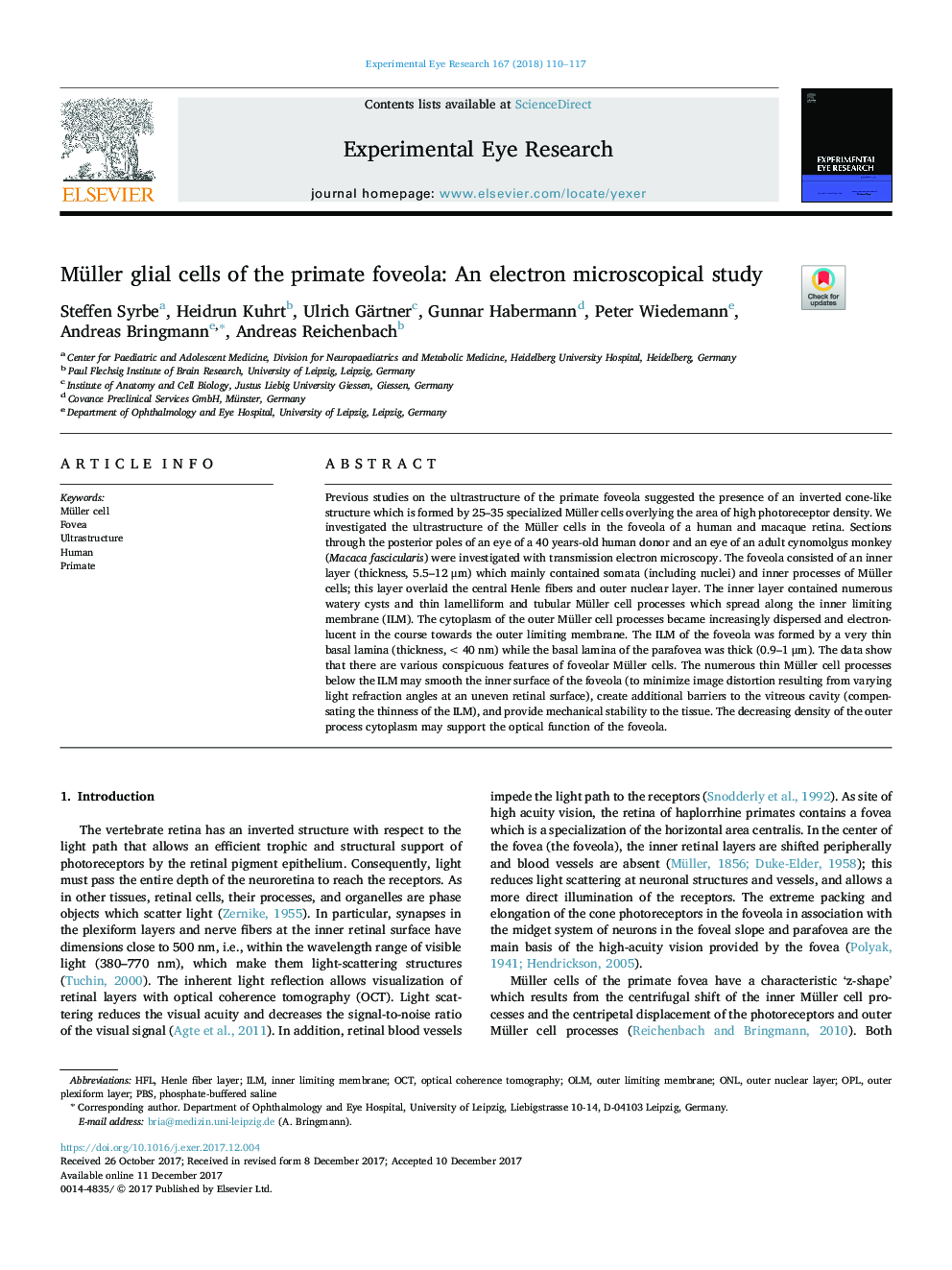| Article ID | Journal | Published Year | Pages | File Type |
|---|---|---|---|---|
| 8792068 | Experimental Eye Research | 2018 | 8 Pages |
Abstract
Previous studies on the ultrastructure of the primate foveola suggested the presence of an inverted cone-like structure which is formed by 25-35 specialized Müller cells overlying the area of high photoreceptor density. We investigated the ultrastructure of the Müller cells in the foveola of a human and macaque retina. Sections through the posterior poles of an eye of a 40 years-old human donor and an eye of an adult cynomolgus monkey (Macaca fascicularis) were investigated with transmission electron microscopy. The foveola consisted of an inner layer (thickness, 5.5-12 μm) which mainly contained somata (including nuclei) and inner processes of Müller cells; this layer overlaid the central Henle fibers and outer nuclear layer. The inner layer contained numerous watery cysts and thin lamelliform and tubular Müller cell processes which spread along the inner limiting membrane (ILM). The cytoplasm of the outer Müller cell processes became increasingly dispersed and electron-lucent in the course towards the outer limiting membrane. The ILM of the foveola was formed by a very thin basal lamina (thickness, <40 nm) while the basal lamina of the parafovea was thick (0.9-1 μm). The data show that there are various conspicuous features of foveolar Müller cells. The numerous thin Müller cell processes below the ILM may smooth the inner surface of the foveola (to minimize image distortion resulting from varying light refraction angles at an uneven retinal surface), create additional barriers to the vitreous cavity (compensating the thinness of the ILM), and provide mechanical stability to the tissue. The decreasing density of the outer process cytoplasm may support the optical function of the foveola.
Keywords
Related Topics
Life Sciences
Immunology and Microbiology
Immunology and Microbiology (General)
Authors
Steffen Syrbe, Heidrun Kuhrt, Ulrich Gärtner, Gunnar Habermann, Peter Wiedemann, Andreas Bringmann, Andreas Reichenbach,
